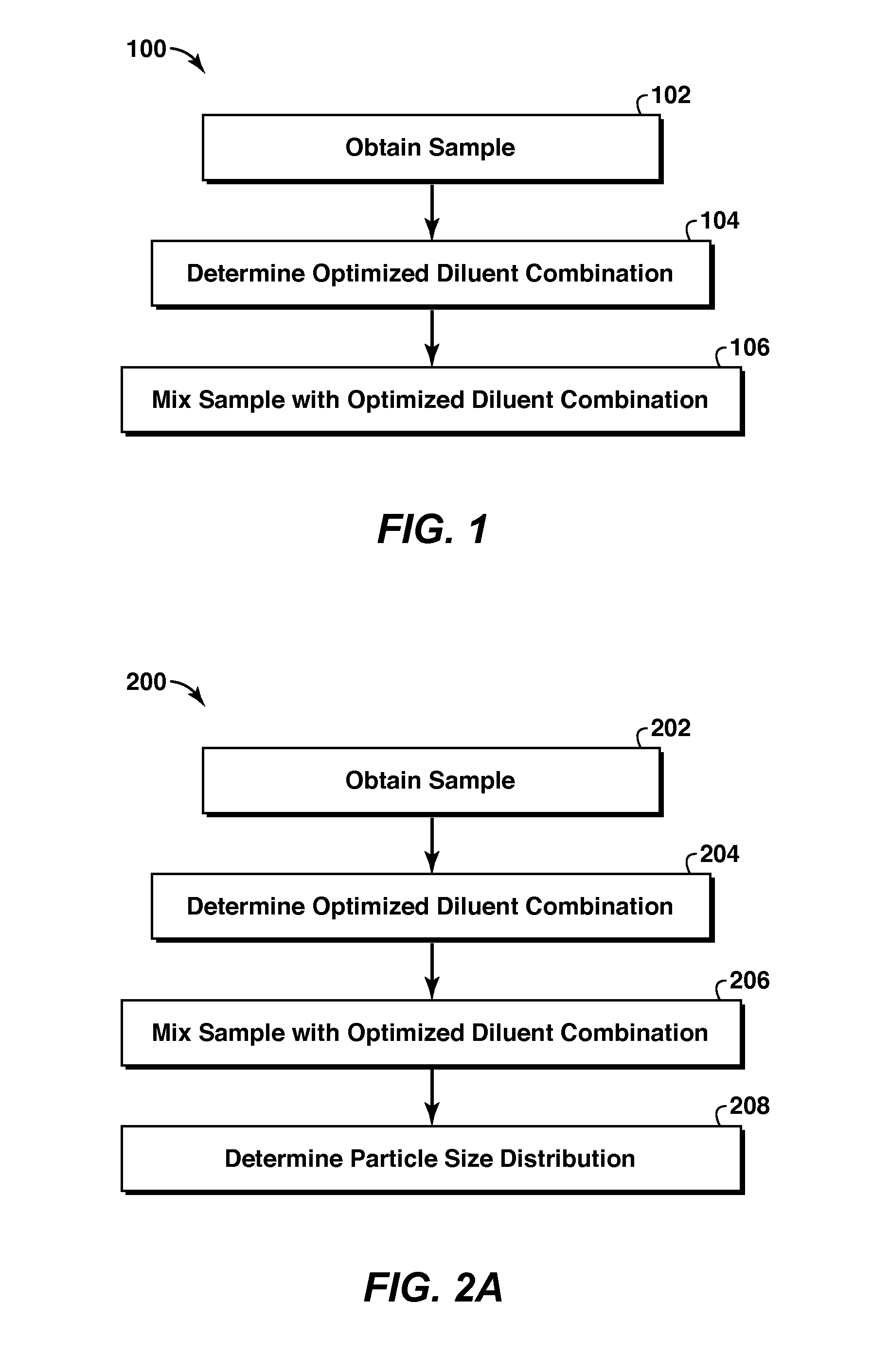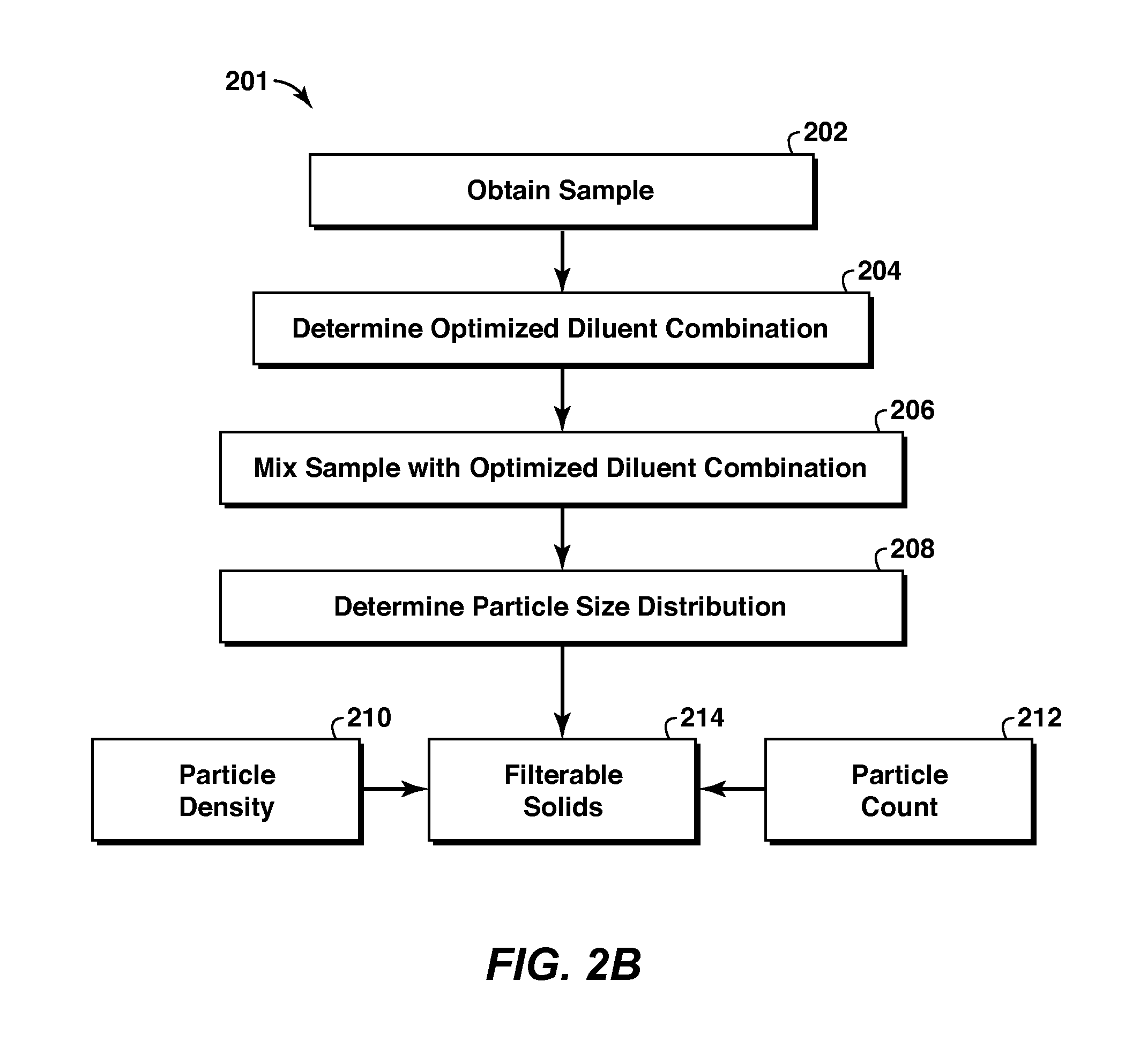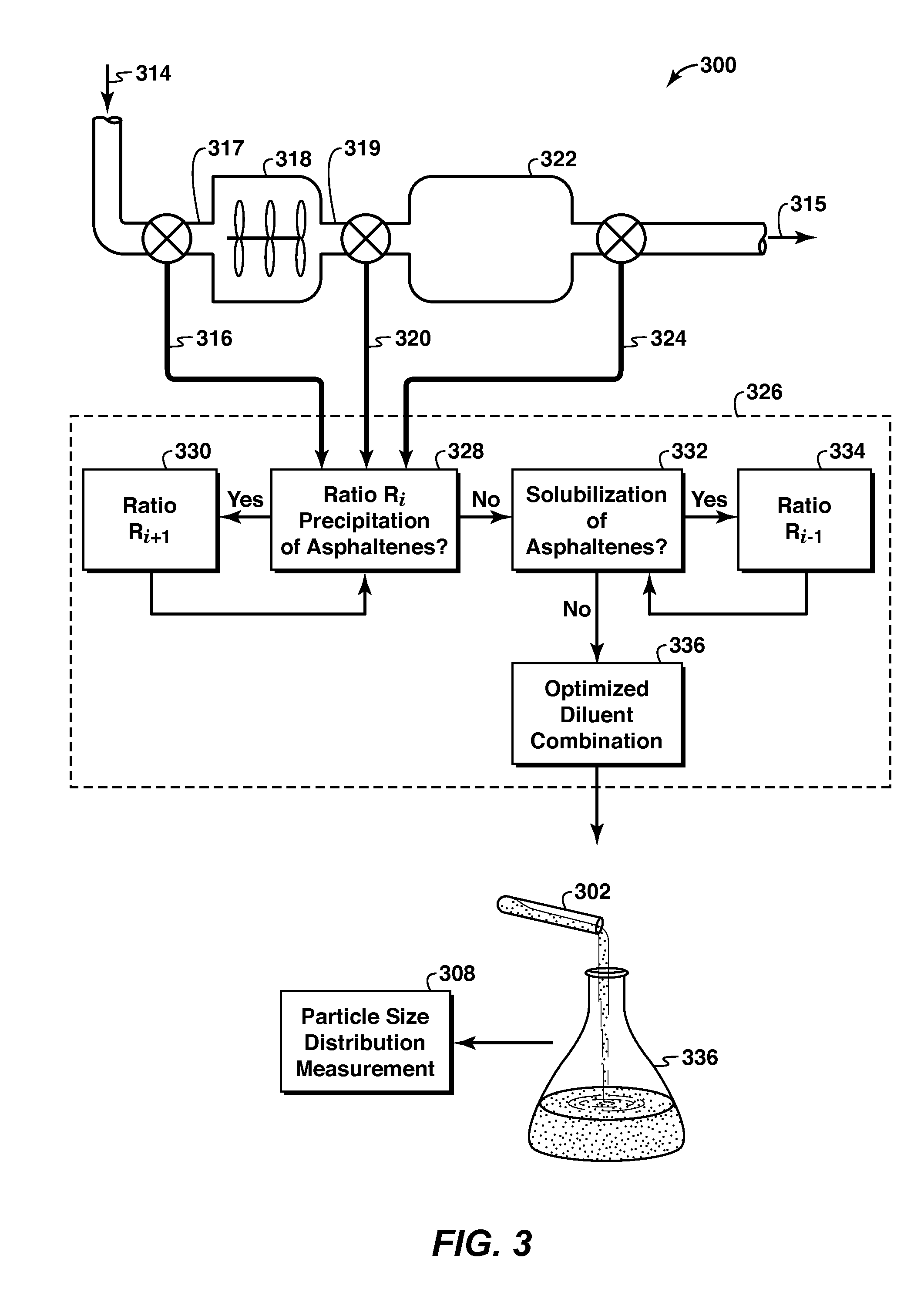Method and System For Determining Particle Size Distribution and Filterable Solids In A Bitumen-Containing Fluid
a technology of particle size distribution and filterable solids, which is applied in the direction of instruments, suspensions and porous materials analysis, material analysis, etc., can solve the problems of affecting the operability of these instruments, difficult, if not impossible, to obtain on-line particle size distribution measurements, and changing asphaltene solubility
- Summary
- Abstract
- Description
- Claims
- Application Information
AI Technical Summary
Benefits of technology
Problems solved by technology
Method used
Image
Examples
example 1
Optimizing Dilution of a Kearl Bitumen-Solvent Sample for Particle Size Distribution Measurement
[0071]Oil sand was obtained from Kearl Oil Leases in Alberta. A Kearl bitumen-solvent was prepared as follows. Kearl bitumen-froth (177 grams) was added to a 600 ml autoclave and heated to 70° C. A pentane:isopentane solvent mixture (270 ml of 60:40 wt %) was added to the heated Kearl bitumen-froth in the 600 ml autoclave and stirred at 500 rpm for 20 minutes. The solvent-to-bitumen weight ratio was 1.6 (specifically, 1.6:1). After 20 minutes the stirrer was shut off and the solids where allowed to settle for 60 minutes. After 60 minutes the supernatant was removed for further testing.
[0072]Toluene (2 ml) and heptane (16 ml), forming an 11 vol % toluene-in-heptane solution, were mixed in a 50 ml sample vial. Kearl bitumen-solvent supernatant (5 ml of 1.6 ratio), prepared as described above, was added to the 11 vol % toluene-in-heptane solution and agitated. One drop of the agitated soluti...
example 2
[0075]Optimizing Dilution of An Athabasca Mining Lease Bitumen-Solvent Sample for Particle Size Distribution Measurement
[0076]An Athabasca Mining Lease bitumen-solvent (also termed as Athabasca bitumen-solvent) was prepared as follows. Athabasca bitumen-froth (177 grams) was added to a 600 ml autoclave and heated to 70° C. A pentane:isopentane solvent mixture (270 ml of 60:40 wt %) was added to the heated Athabasca bitumen-froth in the 600 ml autoclave and stirred at 500 rpm for 20 minutes. The solvent-to-bitumen weight ratio was 1.6. After 20 minutes the stirrer was shut off and the solids where allowed to settle for 60 minutes. After 60 minutes the supernatant was removed for further testing.
[0077]Iterative observations of the Athabasca bitumen-solvent mixture diluted with different levels of vol % toluene-in-heptane solution were made. The optimum heptane-toluene mixture was determined by systematically changing the composition of heptane and toluene to the level just before asph...
PUM
 Login to View More
Login to View More Abstract
Description
Claims
Application Information
 Login to View More
Login to View More - R&D
- Intellectual Property
- Life Sciences
- Materials
- Tech Scout
- Unparalleled Data Quality
- Higher Quality Content
- 60% Fewer Hallucinations
Browse by: Latest US Patents, China's latest patents, Technical Efficacy Thesaurus, Application Domain, Technology Topic, Popular Technical Reports.
© 2025 PatSnap. All rights reserved.Legal|Privacy policy|Modern Slavery Act Transparency Statement|Sitemap|About US| Contact US: help@patsnap.com



